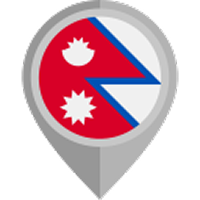Nepal vision | 21/10/2024
The Manaslu Circuit Trek is undoubtedly the untrodden gem in the Gorkha district, wrapped in the arms of one of the world's tallest peaks, Mt Manaslu. But, some other alternatives in the Manaslu region are yet to be explored. Well, our hint is going toward the Manaslu Tsum Valley trek.
The two-week journey will be through the lush forest and rocky terrain of the Manaslu Conservation area. As you take each step, you are surrounded by cheerful, white majestic peaks like Manaslu, Ganesh, Sringi, Naike, Himchuli, and many more.
The best parts of the trek are the cultural artifacts of the ancient Tibetan people and the natural wonder of the Tsum Valley. The trail welcomes the flying chorten, the perfume of the butter lamp from the monastery, ancient dialogue written on the mani wall, and cultural artifacts.
Oh, and how can we forget to take in the breathtaking 360-degree views of the Tsum Valley?
Meanwhile, one of the wonderful parts of the trek is that compared to the Manaslu Circuit Trek, it is easier and more culturally enriched. This means you have a lot to explore in a short period of time.
That being said, the trek is about 4000m high through the remote and pristine region of Manaslu. It would be better if we disclosed all about the beautiful and hidden valley of the Manaslu region, the Manaslu Tsum Valley.
How long is the Tsum Valley Trek?
The Manaslu Tsum Valley trek is about two weeks long, but trust me, that may not be enough time for you to explore the region's gems.
The Manaslu Tsum Valley Trek is a remarkable journey through the scenic and appealing, culturally enriched region of Manalsu. The ancient Tibetan people have lived in the region for over a century.
After a scenic drive from the Kathmandu Valley to the countryside of Sotikhola, the official part of the trek starts. You start your walk on a muddy road and pass several small waterfalls along the bank of the Budhigandaki and Syar Khola.
The initial days until you reach Chumling are a bit hard, but after that, trust me, you will be even more mesmerized as you step into another land that is hidden from the outer world. The beautiful architecture of the monastery, the lush green forest, the smiling and cheering towering white peaks—everything is a gift from nature.
Aside from that, the lama chanting in the masonry, the praying wheel, the flying prayer flags—everything adorns the region. What is even more remarkable is that you can reach the region during festivals like Dumje, Kumje, Ghode Jatra, and many more. Since the Tibetan community inhabits the area, they have a unique festival that many people have still not heard of.

How difficult is the Manaslu Tsum Valley trek?
The Manaslu Tsum Valley lies in the heart of the Manaslu trail. While it is moderately challenging, trekkers with good physical condition can easily tackle the challenge of the trek. Some aspects influence the difficulty of the Manaslu Tsum Valley trek. Let us find out what they are.
Altitude
During the two-week Tsum Valley trek, the highest point you can reach is the Mu Gompa, which is around 3600m. The walk is straight, which is easier for you than covering those ascents in the rocky terrain.
Although, the major challenge of the trail is its altitude. At such an elevation, the oxygen level decreases, which can cause altitude sickness.
Symptoms like headache, nausea, vomiting, and shortness of breath can occur during the condition. Proper hydration, slow pace, and carrying diamox can control them. But in serious conditions, it is better to seek medical help.
Acclimatization is the best preventive measure against altitude sickness. The Nepal Vision Trek team has created an itinerary for Tsum Valley that will provide you with proper acclimatization at Mu Gompa. This will be a perfect place for you to explore the region and give your body time to adjust to the altitude.
Distance and Duration
The trail of the Manaslu tsum Valley covers around 270 km with a hike of an average of 7-8 hours. On a daily walk, you have to take a step to high elevations, steep ascents and descents, and uneven paths.
When you walk on such a pathway for a long time, it can cause physical fatigue. To deal with this kind of physical challenge, it is better to prepare with fitness training and strength building. Start with taking long walks and having a proper fitness routine to enhance stamina and endurance.
Terrain
As you take a walk from the Soti Khola from the bank of Budhi Gandaki River, you cross the hills, lush forest, and rocky trails. The hardest part is going from Jagat to Chhekamparo, which is a bit arduous. But after that, be ready to be rewarded with the scenic views of the valley. As the valley transitions to a much more beautiful and culturally rich scenery, it is wrapped in the arms of the Manaslu region.
Although the rocky trails require footing and balance while crossing the river along the suspension bridge, you have to be careful. The trail demands that you be physically fit, have proper hearing, and have technical skills in the tricky routes.
Who is this Trek For?
The Manaslu Tsum Valley Trek is one of the off-beaten adventures of the Himalayas, perfect for those who want to experience the natural and cultural gems. But the trail requires a good level of physical fitness and some prior trekking experience.
Aside from the difficulty, if you have some trekking experience and are ready to take up the challenge and enjoy the reward of the Tsum Valley, then the trail is for you.
Likewise, if you want to experience something different, consider the less popular but lovely cultural Kanchenjunga Circuit Trek, Upper Mustang Trek, and Nar Phu Valley Trek. These are among Nepal's unexplored gems of the trekking trail.
To wrap up, The scenic topography, cultural gems, and friendly local Tibetan people make the Manaslu Tsum Valley a lifetime opportunity. But you have to be ready to put in the effort and get the reward of the beautiful majestic peak and the rich cultural experiences.
Do you want to make your Manaslu Tsum Valley Trek experience unique and better? Nepal Vision Trek is a team of professionals with 30 years of experience specializing in trekking.
FAQS









